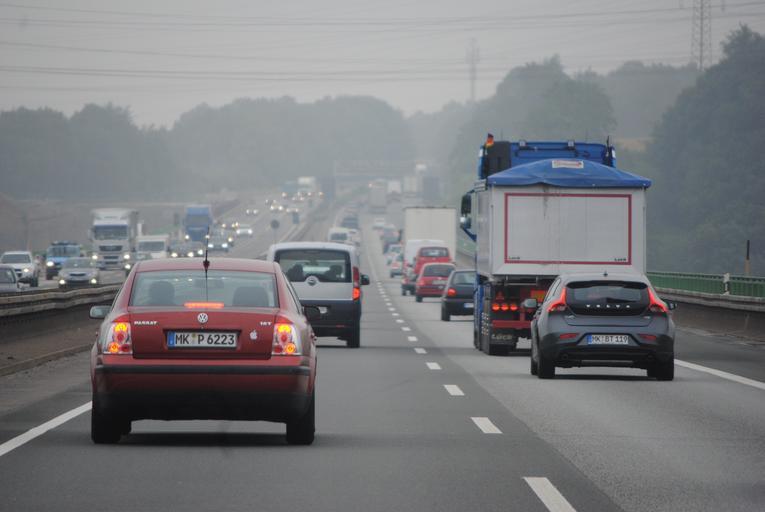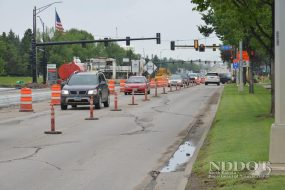
When driving, there are a lot of rules you need to observe so as to ensure the safety of you and other road users. You are definitely not the only driver on the road so there has to be coordination and a proper approach to how you drive.
One of such rules you have to follow is to avoid tailgating. Tailgating is following the car ahead of you too closely. If you should avoid tailgating, then how many car lengths should you be behind another car?
You should keep a minimum of one car length when you drive behind another car every 10 miles per hour so that in the event of sudden brakes, you will be able to stop your car safely without hitting the car in front of you.
How Many Car Lengths Should You Be Behind Another Car?
As reiterated earlier, driving is a professional activity. No matter how much you get used to it, it still requires precision and skill to drive safely.
While driving there is something known as a safe following distance. You should not be too close to the vehicle in front of you. In the event of sudden brakes, you want to be able to stop your car safely without hitting the car in front of you.
It is recommended that when you drive behind another car, you should follow the three-second rule to be safe.
What this means is that when a car moves across a point in front of you, it should take at least three seconds before you move across that point as well. It is all about the minimum safe following distance.
You should know that this distance varies according to the type of vehicle you drive and the kind of road you ply. If you drive a trailer or a heavy-duty truck, you need to leave more distance between your vehicle and the vehicle in front of you.
Also, when you drive on a road that is not good or a road that is very poor, you need to leave more space between you and the vehicle in front because the vehicle can slow down abruptly at any time and you do not want to run into the vehicle.
To drive safely, you should maintain a minimum of one car length at every 10 miles per hour that you drive. The reason for this is that the car length you need to keep between you and the car in front of you depends on the speed at which you are driving.
If you are on top speed, you need to leave more car length between your car and the car in front of you.
Reasons Why You Should Keep Lengths Behind Another Car?
The number one reason you should keep at least one car length between your car and the car in front of you while driving is safety.
Not keeping a reasonable distance between you and the car ahead of you can lead to an accident if brakes are applied suddenly.
To fully understand the reason you should keep car lengths behind another car, you need to understand what stopping distance means. Stopping distance is the amount of space it takes for your car to reach a full halt when the brakes are applied.
How do you calculate the stopping distance? You need to know your reaction distance to the vehicle in front of you and your braking distance as well.
Reaction distance is ascertained by the distance between an event occurring in front of you and how fast you react to it.
As you know, there is actually a little time between something happening in front of your car and when you actually step on your car brakes.
To measure this, the kind of vehicle you drive, your driving experience, your age, and possibly other factors will come into play.
Your braking distance is already directly proportional to the speed at which you are driving. If you drive at a very high speed, you will need more space to hit your brakes effectively.
Studies have shown that you will need 4 times your braking distance if you are driving at double speed. Now, this means that your reaction distance + your braking distance is actually equal to your stopping distance.
Pros of Keeping Car Lengths Behind Another Car
There are advantages to observing a safe following distance when driving. Safety is number one of those.
- Safety: When you keep proper space between your vehicle and the vehicle in front of you, you are reducing the risk of accidents occurring and that is appropriate. In the event of a sudden application of brakes, you will have enough time to react to it.
- Increases Your Driving Experience: Keeping car lengths when you drive behind another car will allow you to react properly and it helps you know the right thing to do in the future when you drive.
Because you have the necessary experience, the next time you encounter something like that, you will know what to do and how to do it. So this gives you an increase in your driving experience.
Cons of Not Keeping Car Lengths Behind Another Car
Just as there are benefits of maintaining a proper car length behind another car when driving, there are also disadvantages of failing to keep a safe distance behind another car.
Accident
When you fail to keep a proper safe distance between you and the car in front of you, you are risking an accident.
Imagine a car is at full speed in front of you, you’re also following closely behind (almost bumper to bumper) and they stop abruptly.
If you are not keeping a safe following distance, what do you think will happen? Well, your guess is as good as mine! You will slam into the back of the car ahead of you and possibly encounter some more collisions behind you as well.
Arrest and Prosecution
If you cause a serious accident because you are overspeeding and you fail to maintain a safe distance, you can be arrested for that.
The driver of the car in front of you can sue you for intentionally ramming into his car. You do not want that for yourself, or do you?
If found guilty, you can be charged for it and your insurance company (if you are covered for it) will have to pay the cost of damages to both your car and the car that was ahead of you.
Some states in the US are very notorious for tailgating or driving too closely behind another car. These states are:
- Idaho
- Georgia
- Nebraska
- Utah
- Virginia
- Washington
- Connecticut
- Ohio
- New Hampshire
- Colorado, and many others in that order.
If you live in such cities, you need to be careful while driving so as not to slam into another car.
Final Thoughts
Driving safely is your responsibility. You need to ensure that your life and the lives of other road users are in your hands in some way. You should always maintain a safe following distance when you drive behind another car.









